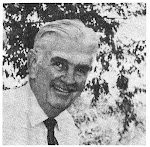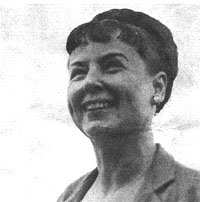
Now,
a trip back to the distant past. Holling’s
art and writing was closely locked into his naturalism. He — and in fairness, his wife, Lucille — were
people of the outdoors beginning with his early jaunts camping in New Mexico
and exploring places like the Mississippi River.
We’re lucky to have the Master’s thesis written by Hazel Gibb Hinman in 1958 at the University of Redlands, California, to chronicle some of the Hollings’ activities. Through her interviews we learn that in August 1927, Holling and Lucille took a three-week canoe trip into the Canadian wilderness north of Missinabie, Ontario. They were joined by Tom Brown, a reporter for the New York Sun, whom they had met on their world cruise. [It may be difficult to find a copy of Hinman’s thesis; I’m working from photocopied pages.]
Camping and canoeing over the next decade contributed to the Hollings’ graphic work for Cunard lines, the Saturday Evening Post, advertising, newspaper features and illustration for Bookhouse and Book Trails.
Holling became an “expert,” Gibb said, joining a boat club, racing canoes and shells, and learning survival techniques if the worst happened. Holling insisted Lucille become a good swimmer, and they kept a canoe at Chicago’s Lincoln Park on Lake Michigan. Perversely, Holling liked to go out on the lake during a “blow” when bad weather hit. Gibb surmises that Holling felt he needed to battle the elements in order to portray them vividly and accurately in his writing and art. Lucille said she could look at the whitecaps on the lake from their window in the Palmolive Building, and one wonders how she felt at those times.
Holling recalled one such instance when he paddled about two miles out on the lake in rotten weather. Returning, he noticed a crowd on shore. Getting closer he saw an angry police officer. Gibb says of Holling, “Still panting from exertion, the [Irish] policeman gestured wildly and commanded him to come in immediately. ‘Don’t you know that you might have been drowned!’”
Holling said he didn’t know quite what to do, so to gain time to think, he yelled back, “Let me rest a minute. I’m fagged!”
Shortly
thereafter, the policeman had cooled off and Holling could explain the situation. He told Gibb he still thought long afterwards
that the cop might have arrested him if he had gone ashore immediately.
What might have proven embarrassing in the 1920s would today would become the source of publicity, promotion, and Twitter bragging rights.
Hazel Gibb Hinman’s [1910-2004] thesis dissertation became a book, published by the University of Redlands in 1958 and titled The Lives and Works of Holling Clancy Holling.”









No comments:
Post a Comment